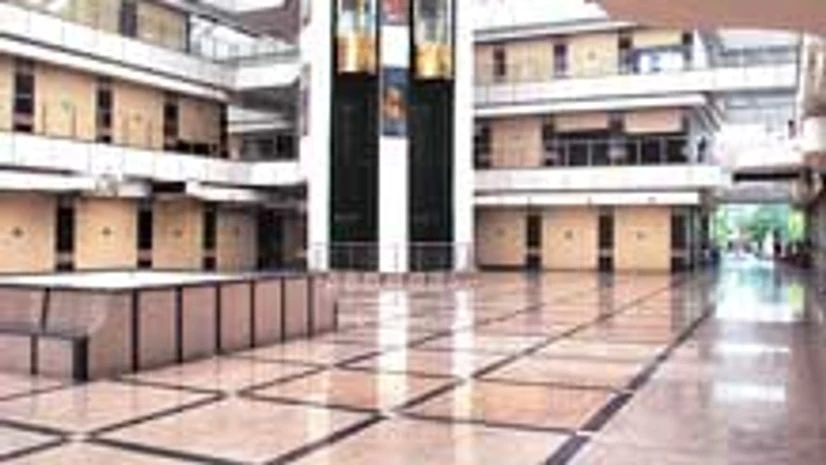Gaurav Pandey, a sweeper at Nirmal Lifestyle Mall in Mulund, in the central suburbs of Mumbai, says he will soon be shifted to some other facility in the city as the mall will be shut in the next two months.
"Not many shoppers are coming here because of new malls in the area. At least retailers should recover the monthly rent," he adds. Many of the stores barring food courts and cafes in the mall are either shut - and retailers are relocating their goods - or in the process of winding up. Nirmal is not an isolated case. Centre One, another celebrated mall in Vashi in Navi Mumbai, is also closing down soon.
According to estimates, over a dozen malls have been closed down or converted into office spaces in Mumbai, the National Capital Region (NCR) and Bengaluru in the last two years, with Mumbai accounting for half the closures.
Also Read
Besides Nirmal and Centre One, malls that have closed in Mumbai included City Mall and Mega Mall in Andheri area, and Dreams Mall in Bhandup in the central suburbs. Kohinoor mall in Kurla is yet to become functional. Eva Mall in Brigade and Sigma Mall in Cunningham Road are those from Bengaluru that shut shop.
Navi Mumbai, the well-planned satellite city of Mumbai, has already seen malls such as Gold Souk Mall, Wedding Mall and Palm Beach Galleria converted into office complexes or showrooms for automobile companies. According to consultants, at least four to five such malls in Delhi/NCR, especially in the areas of Rohini, Vasant Kunj, Pitampura and Gurgaon, are lying vacant and looking for buyers. Nirmal, Centre One and other malls which came up in the early 2000s have lost relevance to today's customers spoilt for choice by malls that are well designed and humongous in size, realty experts say.
Take Centre One for instance. The mall, which has a built-up area of 120,000 sq ft and carpet area of 60,000 sq ft and a 200-seat food court, could not find enough takers after swanky malls like Inorbit, owned by the Raheja group, entered the fray. "In 2003, smaller malls were fine. But in 2013 and 2014 when the average size of malls is 500,000 sq ft and big malls are above a million sq ft, smaller malls find it difficult to survive," says Anupam T, chief executive, malls, at Runwal group which runs four malls in Mumbai, including the 1.2-million sq ft R City in Ghatkopar and the 400,000-sq ft R Mall in Mulund.
"Unless small malls are sharply positioned and differentiated, they will fade away," adds he. He cites the success of Alpha cluster of stores in Vile Parle in Mumbai which sell all sorts of electronic products and are known for a variety of imported goods and competitive pricing.
Rajan Malhotra, president, Future group, agrees with Anupam. Malhotra argues that it is only a question of how many malls a catchment can take. "Initially, malls exist in monopoly conditions. The moment bigger and better malls come up in the same locality, shoppers go there," he adds.
LBS Marg, a 21-km stretch between Sion in Central Mumbai and Thane on the north end, has half a dozen malls such as Phoenix Marketcity in Kurla, R City in Ghatkopar, Neptune Magnet Mall in Bhandup and R Mall in Mulund, among others. "The stretch can take only two or three big malls," says a senior executive of the Tata-owned Trent, requesting anonymity.
With lower sales in malls and saturation, mall developers such as DLF and Runwal are not building new malls. According to property consultant Jones Lang LaSalle (JLL), only 2.4 million sq ft of new mall space, which consists of just six to seven malls, was completed in 2014, as compared to an average of four to seven million sq ft between 2009 and 2013.
The Trent executive says leveraged malls cannot function in the Indian banking system due to high lending rates and long gestation periods. "A mall is a five-to-six-year business and needs 80 per cent equity contribution from developers. If you take loans at 14 to 16 per cent from banks and run it for five to six years, it will not work," he adds.
He says banks are used to fund 'for-sale' assets such as residential properties and small offices where developers get instant cash flows. According to Susil Dungarwal, founder of mall management firm Beyond Squarefeet, while a developer has to wait for five years, which includes three years of construction and two years of operations, to make 15 to 20 per cent returns, in residential property they can make money even before the launch of the project.
"Residential is instant gratification but in malls, you get money every year plus appreciation in property," he said. Dungarwal of Beyond Squarefeet blames poor design and layouts, bad mall management and the sold model for the failure of malls such as Nirmal Lifestyle and Dreams Mall, among others. However, he says competition is not the lone factor behind the closure of malls.
"If the mall is good, the competition will complement the existing mall. If the fundamentals are not good, the competition will kill it faster," he says, referring to how Inorbit and Infinity malls co-exist in the Malad area of Mumbai.
Experts such as Dungarwal and Anupam believe that e-commerce is not impacting the mall business much though it has snatched away some customers. "There is a small dent (caused by e-commerce), but not much because e-commerce contributes just three per cent of Indian retail," Dungarwal says.
SHUTTERS DOWN
Mumbai
- Nirmal Lifestyle, Mulund
- Centre One, Vashi
- City Mall, Mega Mall, Andheri
- Kohinoor Mall, Kurla
- Dreams Mall, Bhandup
- Eva Mall, Brigade Road
- Sigma Mall, Cunningham Road

)
